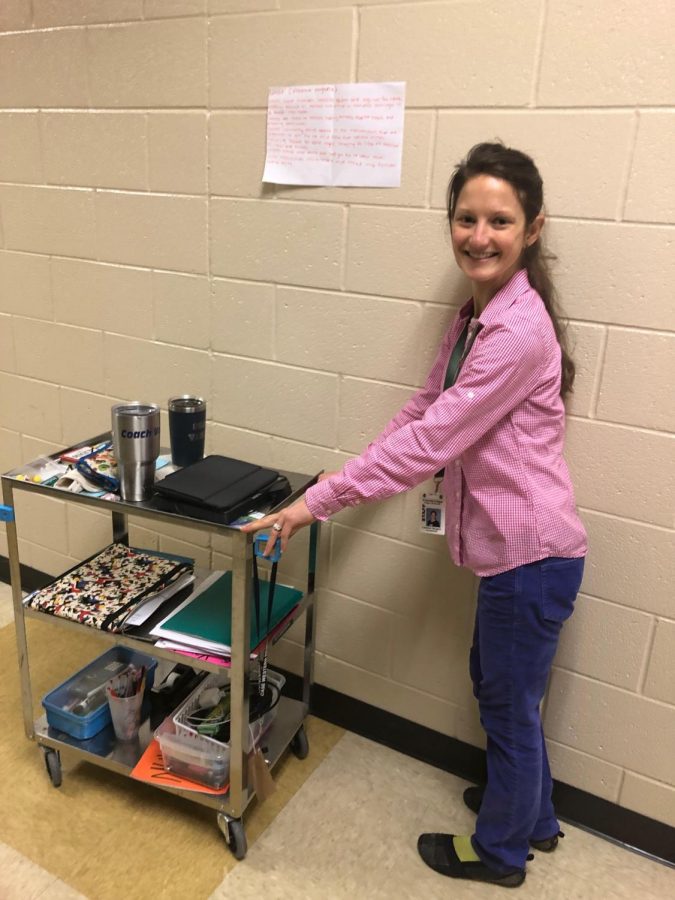The Classroom “Cart System”: Is it Confusing or Creative?
Chemistry teacher Leanne Vaughn with her cart, which carries many of her classroom materials.
March 14, 2019
For students walking down the science hallway, science teachers carting materials between classes is a common sight.
However, many students don’t understand why this is happening or the effects it has on them and teachers.
To explain this, it is important to go back to the beginning of this system.
According to chemistry teacher and science department head Ellen Kerr, the cart system wasn’t used when the school opened because there were only two science teachers. That meant there were enough lab rooms for those teachers to use.
But as the number of teachers grew, the school gradually ran out of classrooms equipped for lab work.
Originally, there were a few “floater” teachers who didn’t have a classroom and switched locations constantly, said Kerr. However, Kerr said, some teachers felt these “floaters” were invading their space.
Unlike other classes, science courses didn’t benefit from more online enrollment because experiments are more difficult to do in an online class.
It became evident that a new method was needed.
The method devised involves some science teachers staying in one room for two or three periods for one course and then moving to a different room for another two or three periods, using a cart to move their teaching materials.
Teachers move to one of the three laboratory classrooms for their chemistry classes, which have the biggest emphasis on experiments, said Kerr.
According to Kerr, the science teachers who move have a separate room in the downstairs science wing where they can store their carts. The room also has cubicle-like spaces for the teachers to use as a work area.
Kerr said that this method was designed to create the best experience for students and teachers.
“It minimizes teachers’ disruption, minimizes the amount of equipment we need and maximizes students’ classroom experiments,” she said.
This system requires increased cooperation and communication between the science teachers, said chemistry teacher Leanne Vaughn.
When working with other teachers who use the same classroom as her, Vaughn said she makes sure to tell them her expectations and ask nicely if they do something she doesn’t like.
This system also allows teachers to help each other with labs, with one setting them up and the other taking them down.
Students may assume that teachers switching rooms only affects the teachers themselves.
“They might feel like they’re treated unequally or treated lesser than other teachers,” said freshman Zachary Rose.
However, Vaughn said that it creates more difficulties for the students than the teachers.
“The biggest issue is that students don’t know where to find us because we don’t teach in the same room,” she said.
That requires more planning for the teachers, as well, said Vaughn.
Teachers must learn to think ahead and know what questions students might be asking ahead of time. They also have to communicate with their students what classrooms they will be in before school if they need extra help.
Kerr said although the cart system is a little bit of an inconvenience, she said she appreciates how the science teachers work with it.
“I am proud of teacher cooperation and sharing,” she said.

